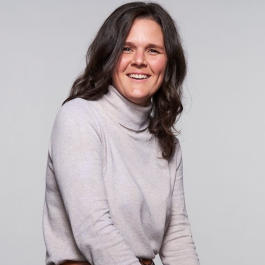Product management is a juggling act, and it is an essential part of any tech company’s business model. According to a recent survey by McKinsey, product management capabilities are among the top two drivers of business performance for organizations across industries. Managing the needs and demands of various stakeholders across the organization can be tricky, so Built In sought out product leaders to learn their best tips for juggling the job.
Kaavash Bahl, senior product manager at Publica, a connected TV ad platform that maximizes revenue and efficiency for publishers and advertisers, knows the juggling act well. After learning what each stakeholder cares about, he works to tailor his communication so that each person gets and shares relevant and helpful information.
“It's a bit like being a translator, making sure the essence of our project resonates with everyone,” he said.
For Erika Engler, senior hardware project manager at the robotics company Apptronik, the key to effective stakeholder management is discernment: knowing who needs to know what, and when.
“Not every stakeholder needs to be involved in every communication or decision,” she said, emphasizing that reply-all kinds of communication often lead to small issues becoming big roadblocks, stymying progress.
These product professionals are adept at juggling the needs and challenges of stakeholders, and they’ve been gracious enough to share their wisdom with Built In.
Publica is a connected TV ad platform that maximizes revenue and efficiency for publishers and advertisers.
Describe your approach to effective stakeholder management. What are the key strategies you employ to ensure key voices are heard during product development?
Effective stakeholder management hinges on a few core strategies. First, it's crucial to identify and understand the stakes of each stakeholder. Who are they? What do they care about? How does the project impact them? This understanding allows me to tailor my approach and ensure that communications are meaningful and relevant to each stakeholder.
Next, I prioritize keeping stakeholders informed with regular updates. This isn’t about flooding their inboxes with every little detail but about sharing pertinent updates that keep them engaged and informed about the project's progress, challenges and successes. It's about striking the right balance between too much and not enough information.
And then there's feedback. Establishing channels for stakeholders to share their thoughts and concerns is vital. More importantly, it’s what you do with that feedback that counts. It’s about showing that their input is valued by acting on it where possible, or at least explaining why certain suggestions can't be implemented.
I'm not going to pretend I've mastered it — there's definitely been a learning curve, and I'm still refining my approach. It's a journey and I'm here for it.
How do you tailor your approach depending on the stakeholder?
Adjusting my approach for different stakeholders is key to getting everyone aligned. As an example, let's take communicating a beta launch of a product with our CTO and business heads: it's a shift in focus here that really matters.
With the CTO, our conversations are tech-heavy. We delve into the nitty-gritty of avoiding regressions and ensuring our code is pristine. It's a deep dive into our strategies for rigorous testing and tackling technical debt head-on. This dialogue is vital; it signals to our CTO that we're deeply invested in the tech side's sustainability and strength.
Now, flip the script to a chat with our business head. The spotlight shifts to the market. We pull out the charts showing how our product is making waves during beta testing and how we're uniquely positioned to capture market interest. It's less about the nuts and bolts and more about the big picture, how we're positioned to meet customer needs and drive growth.
In both chats, the aim is to hit the right notes: technical prowess for the CTO, market dynamics for the business head. It's a bit like being a translator, making sure the essence of our project resonates with everyone.
“It's a bit like being a translator, making sure the essence of our project resonates with everyone.”
How do you deal with a difficult stakeholder?
Well, we've all been there. My first step is always empathy. Try to see where they're coming from. It's about putting yourself in their shoes and understanding their concerns. Sometimes, a good, old-fashioned one-on-one chat can work wonders.
You'd be surprised how much common ground you can find when you really listen and empathize. And it's this common ground that often becomes the foundation for moving forward. It's where solutions begin to take shape, allowing us to navigate through disagreements with a shared understanding and mutual respect.
And if things get really tricky? It's all about compromise and negotiation, finding that sweet spot where everyone's a bit happy and a bit unhappy. I've also found that keeping track of decisions and their rationales helps a ton, especially when done with transparency. When everyone can see the decision-making process, it adds clarity and helps smooth over any ruffled feathers.
In the end, it's all about finding that harmony, even when the situation feels like a complicated piece of music. It's navigating those tricky parts together, aiming for a tune that we can all agree sounds pretty good.
Apptronik is a robotics company that has built a platform to deliver and scale a variety of general-purpose robots.
Describe your approach to effective stakeholder management. What are the key strategies you employ to ensure key voices are heard during product development?
When starting a new project, one of the most important tasks, aside from getting a handle on the scope, is identifying and understanding your stakeholders. I like to outline a list of all stakeholders, their role, when and how to engage with them, as well as any key care-abouts to keep in mind.
Not every stakeholder needs to be involved in every communication or decision. That’s super important, as otherwise simple or small decision points could be blown out of proportion and severely stymy the team’s progress.
“Not every stakeholder needs to be involved in every communication or decision.”
During the product development lifecycle, I like to make sure I consistently engage with stakeholders even in small interactions. It helps to build trust and allows for open communication, especially as issues arise.
If I feel like a few voices are dominating the many during development, I will start focusing on smaller group sessions to make it easier for folks to speak up. I then take those talking points into a larger group setting to help facilitate discussion and make it easier for individuals to have their opening to speak up.
How do you tailor your approach depending on the stakeholder?
As we know, every stakeholder has different interests during the development lifecycle, and they often use different metrics to analyze the same problem. You also must be cognizant of the type of situation in which you are engaging stakeholder feedback or approval.
The information communicated for a scope or requirement change looks vastly different than what you would provide for a project kick-off. Regardless of the scenario, pre-alignment with stakeholder groups goes a long way to making sure you cover all your bases.
Using a scope change as an example, I would start with capturing all the nitty gritty details around what is changing and why. I would then review with the lead engineer responsible for executing to validate schedule and budget impacts as well as associated technical risks.
That information would then get rolled up into a slide deck or short summary email with the key details around the what and the why that is tailored to the critical stakeholders such as resourcing impacts for the manager(s), customer impacts for sales, and schedule and budget impacts (specifically for EOQ) for leadership.
How do you deal with a difficult stakeholder?
More often than not, a difficult stakeholder is just someone who is struggling to communicate their care-abouts or concerns in an effective way. There are a few things I have found to be consistently successful.
First: Face to face communication. Things can often get misconstrued over email or chat. I've found that sitting down with that person or stopping by their desk (even if it's a quick question) helps to build rapport and trust that goes a long way. They are more open to collaboration and compromise.
Second: Asking enough questions to make sure you understand the problem and then repeating it back to them in your own words. People often walk away from a conversation thinking everyone is aligned when in reality there are multiple interpretations of the problem.
Third: Balancing being direct with being compassionate and empathetic. It's easy to dismiss opinions or concerns as superfluous especially when you are trying to quickly work towards a solution. Allowing that person to voice their opinion and actively talk through it with them makes them more likely to voice their thoughts in a productive manner in the future. And to be honest, sometimes you just need to let people vent.









